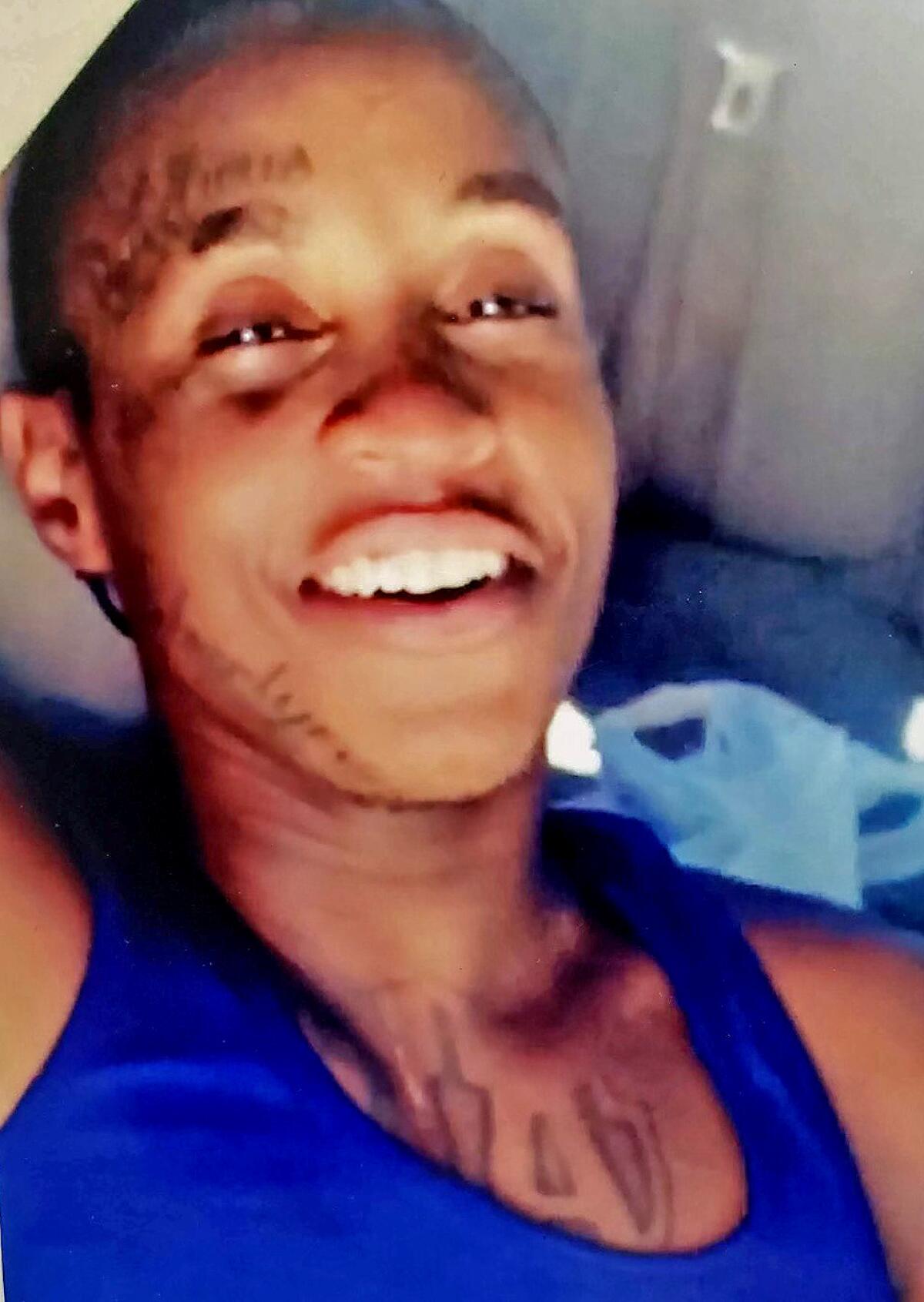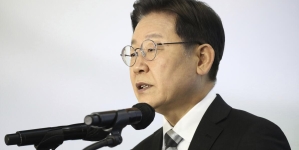-
A Professor Was Fired for Her Politics. Is That the Future of Academia? - 3 hours ago
-
Big changes coming to Disneyland: ‘Monsters’ is out; ‘Avatar’ is in - 7 hours ago
-
In War-Torn Nations, Trump’s Travel Ban Brings a New Hardship - 1 day ago
-
As Trump Says He’s Stamping Out Antisemitism, He Advances Similar Tropes - June 3, 2025
-
How a former factory worker rose to South Korea’s presidency - June 3, 2025
-
$105 Million Reparations Package for Tulsa Race Massacre Unveiled by Mayor - June 1, 2025
-
Israel Bars Arab Foreign Ministers From High-Level West Bank Visit - May 31, 2025
-
Central California carjacking was an insurance scam, investigators say - May 31, 2025
-
U.S. Pauses Exports of Airplane and Semiconductor Technology to China - May 29, 2025
-
Missing California influencer found dead near Arizona hiking trail - May 28, 2025
Judge won’t dismiss manslaughter case against Torrance police officers
A Los Angeles superior court judge rejected a defense effort on Friday to dismiss a manslaughter indictment against two former Torrance police officers in the 2018 shooting death of a young Black man sitting in a suspected stolen car with an air rifle.
Judge Sam Ohta declined to dismiss the March 2023 indictment against Matthew Concannon and Anthony Chavez on one count each of voluntary manslaughter in the fatal shooting of Christopher Deandre Mitchell, 23.
The 36-page decision followed more than a year of arguments in the only case filed by a special prosecutor — Lawrence Middleton, who was hired by Dist. Atty. George Gascón to review police shootings his predecessor had declined to prosecute.
On Dec. 9, 2018, Concannon and Chavez, responding to reports of a man driving a stolen vehicle, encountered Mitchell in a Ralph’s parking lot in Torrance. They boxed in the car with theirs, and without calling for backup or waiting for other officers, approached the vehicle. Concannon’s body camera showed he opened the driver’s door when they reached the car.
The officers initially told Mitchell, “Don’t move, don’t move,” and then repeatedly ordered him out of the car, but he did not comply, body cam video showed.
Concannon said in police reports that as he and his partner approached, they noticed Mitchell’s hands move toward his lap, and he saw what he believed to be a firearm.
Both officers then shot Mitchell at close range, killing him.
The pair described the weapon they had seen — later determined to be a “break-barrel air rifle” — as being “pinched” between Mitchell’s legs, according to a report from the district attorney’s office. It is visible in the body cam video as Concannon shines his flashlight on Mitchell’s body.
Ohta said he disagreed with Chavez’s lawyers’ argument that there was a lack of probable cause to indict, noting that Middleton had presented evidence to the grand jury that Chavez shot Mitchell as a result of “contagious fire.”
The judge said factual disputes over the evidence were not for him to determine, as that was the grand jury’s role.
“The people presented sufficient evidence for the grand jury to conclude strong suspicion that defendant Chavez engaged in contagious fire,” he said.

Christopher Deandre Mitchell was 23 when Torrance police shot him to death.
(Courtesy of Peter Carr)
Ohta also rejected the defense argument that the special prosecutor had built his entire case on officer-created jeopardy, the perception that the two cops used bad tactics that created the situation that led to the shooting. California did not enact a law requiring such circumstances until after the shooting, and the law could not be applied retroactively, the defense lawyers argued.
But Ohta said that this “irrelevant evidence” made up only part of the presentation to the grand jury and that Middleton focused mainly on the interaction between the officers and Mitchell, while “the majority of the closing statement focused on relevant and material evidence.”
Chavez and Concannon have been temporarily suspended by the California Commission on Peace Officer Standards and Training, meaning they cannot work as police officers.
The two were both linked to a scandal over bigotry inside the Torrance Police Department after an investigation revealed roughly 15 officers had sent approximately 390 racist, sexist or homophobic text messages from 2018 to 2020.
While The Times never found evidence that Concannon or Chavez had sent any of the messages, they were both among those investigated in the scandal, according to documents previously reviewed by the newspaper and to sources who spoke on the condition of anonymity.
After his ruling, Ohta informed the defense lawyers they could take a writ to appeal — a process that would probably delay trial proceedings.
The legal wrangling is the latest in the killing of Mitchell, whose death led to protests by the Los Angeles chapter of Black Lives Matter.
Former Dist. Atty. Jackie Lacey became the subject of protests after her staff lawyers decided in 2019 not to prosecute Concannon and Chavez. The case became one of four that special prosecutor Middleton reopened after he was hired by Gascón, who was elected in 2020 as Lacey’s successor. The case, however, has become Middleton’s lone prosecution, despite the county having spent hundreds of thousands of dollars for his services.
In announcing the indictment against Concannon and Chavez in 2023, Gascón questioned “whether the officers were able to see the gun before the shooting.”
Both officers have pleaded not guilty to the charges, saying they saw Mitchell reach for a gun nestled between his legs. Concannon and Chavez remain free on bond, each facing a maximum of 11 years in prison if convicted.
The officers’ lawyers have insisted that Lacey got it right when her office deemed the shooting legal.
“Based on Mitchell’s failure to follow the officers’ directions, his continued efforts to conceal the object in his lap, the physical appearance of the object, and the movement of his hands toward the object, it was reasonable for the officers to believe that the object was a firearm and to respond with deadly force,” prosecutors wrote in 2019.
But in a presentation to the grand jury, Middleton argued that the officers’ tactics made the shooting “inevitable,” saying they did not call for backup, did not wait for other officers, approached the car without any cover, and hadn’t seen the air gun before opening fire.
In seeking to dismiss the indictment, defense lawyers pointed to the Supreme Court’s ruling that deadly force is allowed if a reasonable officer in the same situation would conclude there was a threat to life or great bodily harm.
Tom Yu, Chavez’s attorney, and Lisa Houlé, Concannon’s lawyer, also alleged there had been procedural violations with exculpatory evidence, such as not showing grand jurors an enhanced video of the air gun in Mitchell’s lap.
Ohta said that he saw no difference at the key moment in the enhanced video, and that other evidence the defense believed should have been presented would not have changed the decision to indict.
Defense lawyers said the “entire prosecution is outrageous.”
“These officers were cleared of all wrongdoing in 2019,” Houlé and co-counsel Matt Murphy said. “You do not cure past injustices by creating new ones, which is exactly what George Gascón is doing here.”
Source link






